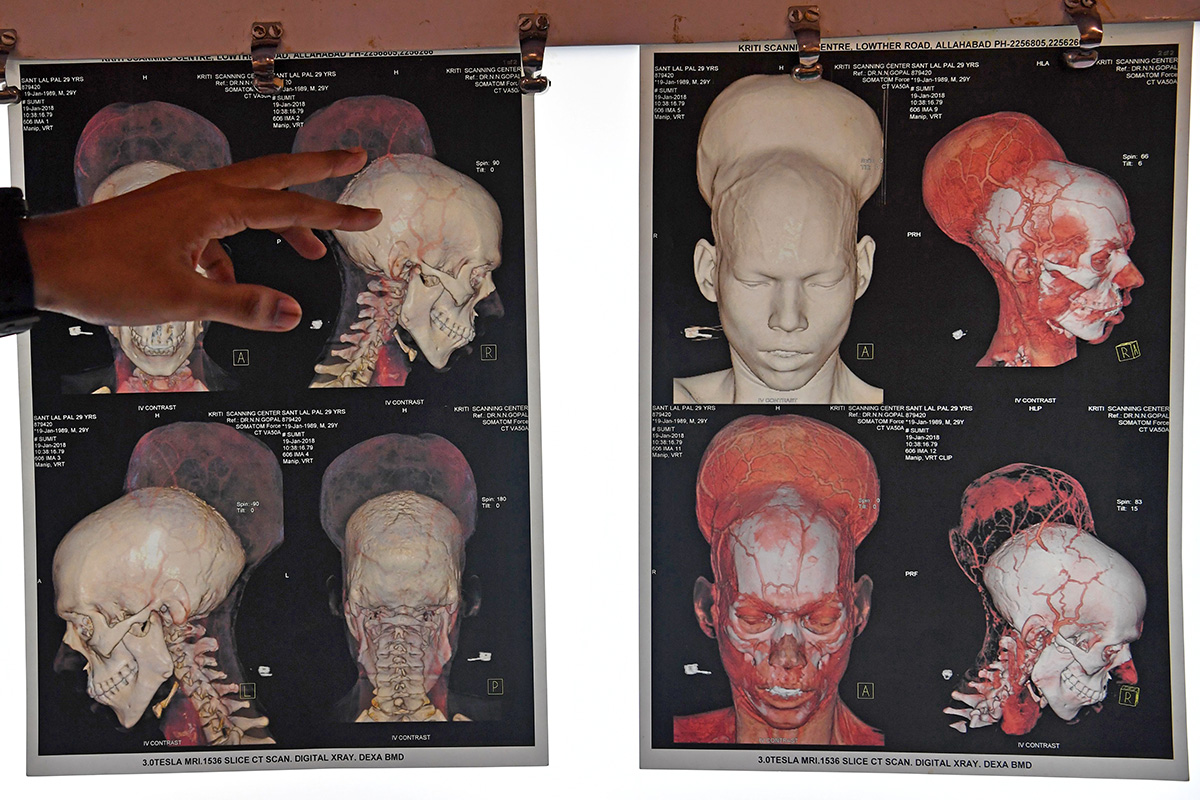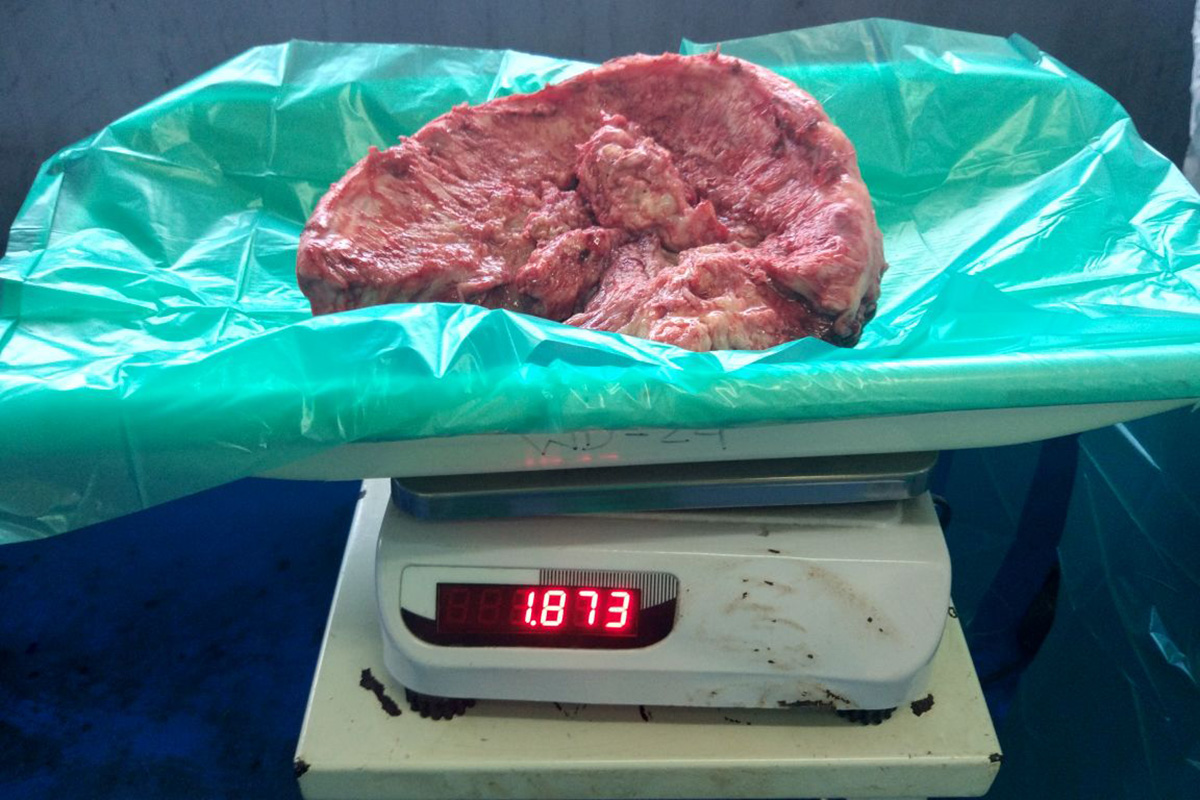
Indian Man's Brain Tumor Might Be the World's Largest

Doctors in India recently operated on what they say could be the largest brain tumor in the world, according to news reports.
The patient, 31-year-old Santlal Pal, had been living with the large mass on his head for three years before his surgery to remove the tumor, the BBC reported today (Feb. 22). Prior to the surgery, three hospitals had told Pal that the tumor was inoperable, his wife Manju told the BBC.
The tumor weighed nearly 4 lbs. (1.8 kilograms) — "much bigger than [Pal's] own head," Dr. Trimurti Nadkarni, a neurosurgeon at Nair Hospital in Mumbai, India, who performed the 6-hour operation, told The Hindu.

"We have checked all the available medical texts," Nadkarni said. "We have not found any tumor as big as this." He told The Hindu that he removed a 3-lb. (1.4 kg) brain tumor from another patient in 2002.

According to Nadkarni, 90 percent of the tumor was located between Pal's skull and his scalp; just 10 percent of the tumor grew within the skull. But that 10 percent put pressure on Pal's brain, damaging his vision; it could have led to further problems, including paralysis and neurological damage, the doctors told The Hindu. The doctors said that they hope Pal will regain his vision.
Pal is currently recovering in the intensive care unit and is in stable condition, according to The Hindu.During the operation, the doctors "had to cut open the scalp and remove the tumor. The part of the tumor within the skull was removed by making an opening in the skull," Nadkarni said.
The doctors are currently waiting on test results to see what type of brain tumor — and whether it's cancerous — Pal had, Nadkarni told Live Science.
Sign up for the Live Science daily newsletter now
Get the world’s most fascinating discoveries delivered straight to your inbox.
"His recovery greatly depends on the nature of the tumor;" if it's cancerous, he may need further treatment, such as radiation and/or chemotherapy, Nadkarni said.
Editor's note: This article was updated at 10:50 pm ET on Feb. 22 to include information from Dr. Trimurti Nadkarni.
Originally published on Live Science.










